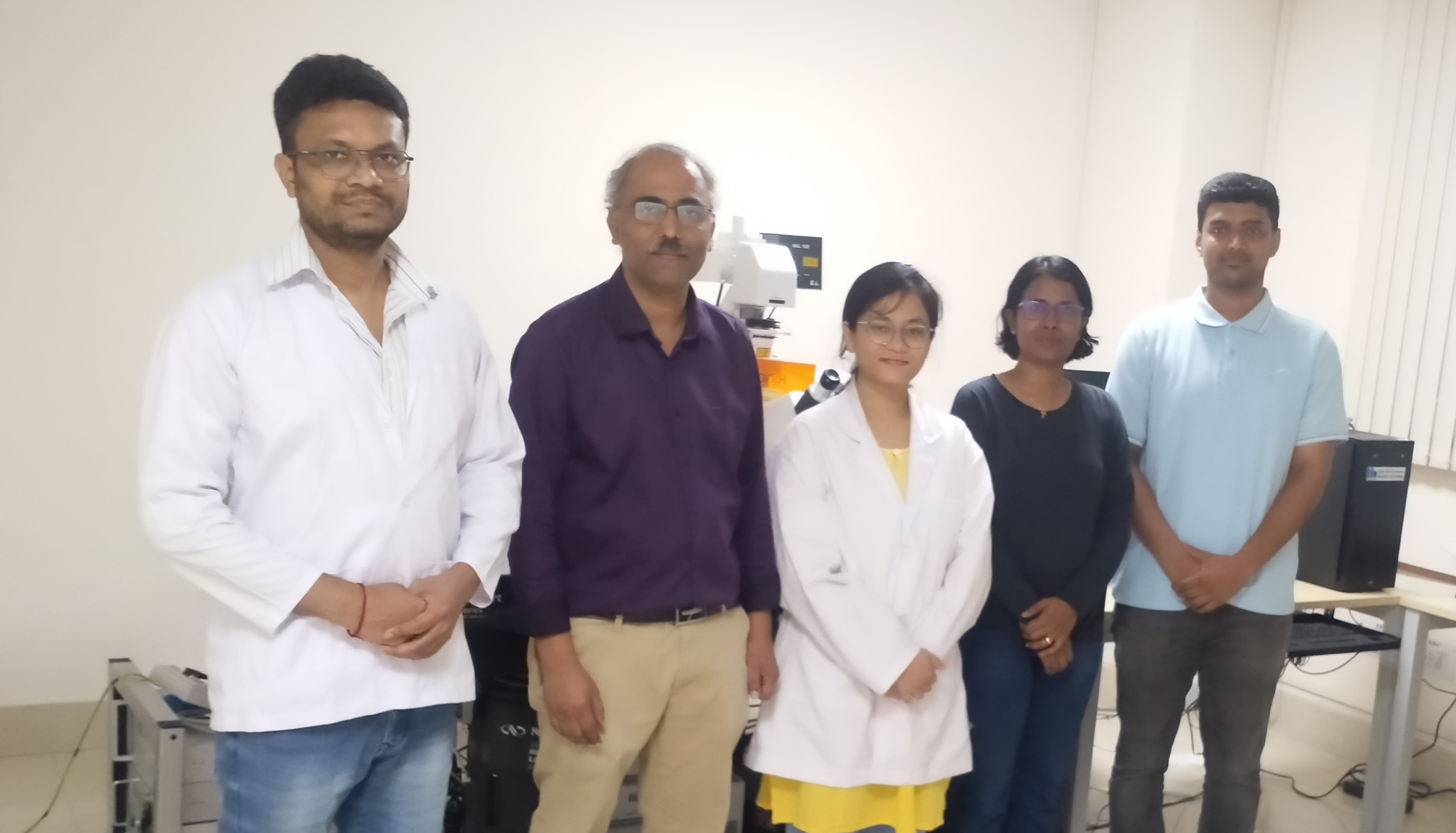A research team atIndian Institute of Technology Guwahati led by Prof. G. Krishnamoorthy, from the Department of Chemistry, have developed a highly responsive fluorescent sensor that can detect cyanide in water and human cells using only a UV light source. The developed sensor changes colour and emits bright fluorescence in the presence of cyanide, contributing to both environmental safety and forensic investigations.
Cyanide is a highly toxic compound widely used in industrial processes, such as the manufacturing of synthetic fibres, metal cleaning, plastics, electroplating, and gold mining. Improper disposal of Cyanide often leads to its release into the environment, contaminating soil and water sources. Consumption of this contaminated water can disrupt oxygen supply in human body. Even a small amount can cause severe health effects or death. Therefore, there is a need to develop sensors that can detect even trace amounts of cyanide in various materials.
Fluorescent chemosensors are chemicals that light up under light when interacting with specific chemicals. These sensors are popular due to their ease of use, low cost, high sensitivity, and potential for use in biological systems. While many existing sensors work by dimming their light (known as a "turn-off" response) when detecting substances, a “turn-on” response—where the signal brightens instead—is often more effective because it avoids false negatives and improves detection clarity.
IIT Guwahati team has developed a “turn-on” chemosensor based on a compound called 2-(4′-diethylamino-2′-hydroxyphenyl)-1H-imidazo-[4,5-b]pyridine, which gives a weak blue fluorescence under UV light. In the presence of cyanide, this fluorescence turns on and shifts to a brighter cyan colour due to a chemical change in the molecule. This reaction is particular to cyanide, especially in a carefully selected solvent system that includes water. The detection limit achieved in aqueous samples is as low as 0.2 μM, much less than the World Health Organisation's permissible limit of 1.9 μM in drinking water.
The research team conducted a combination of lab experiments and advanced computational calculations called DFT calculations, to confirm the sensing mechanism of the developed technology.
The researchers also demonstrated that this molecular sensor can function like a basic logic gate, a key element in digital electronics. This means it may have future use in developing smart, sensor-based electronic devices that can detect harmful chemicals like cyanide in real time.
The study, published in Spectrochimica Acta Part A: Molecular and Biomolecular Spectroscopy, was conducted in collaboration with Prof. Bithiah Grace Jaganathan, Department of Bioscience and Bioengineering, IIT Guwahati. Ms. Mongoli Brahma was the research scholar involved in the development of this sensor along with other research scholars, Mr. Arup Das Kanungo, Ms. Minati Das, and Mr. Sam P. Mathew.
As the next step, the research group is developing a simple kit for testing a variety of analytes.
This development opens new possibilities for easy, rapid, and reliable cyanide detection in environmental, medical, and industrial settings using a cost-effective tool and basic UV light—making it accessible for wide use.


